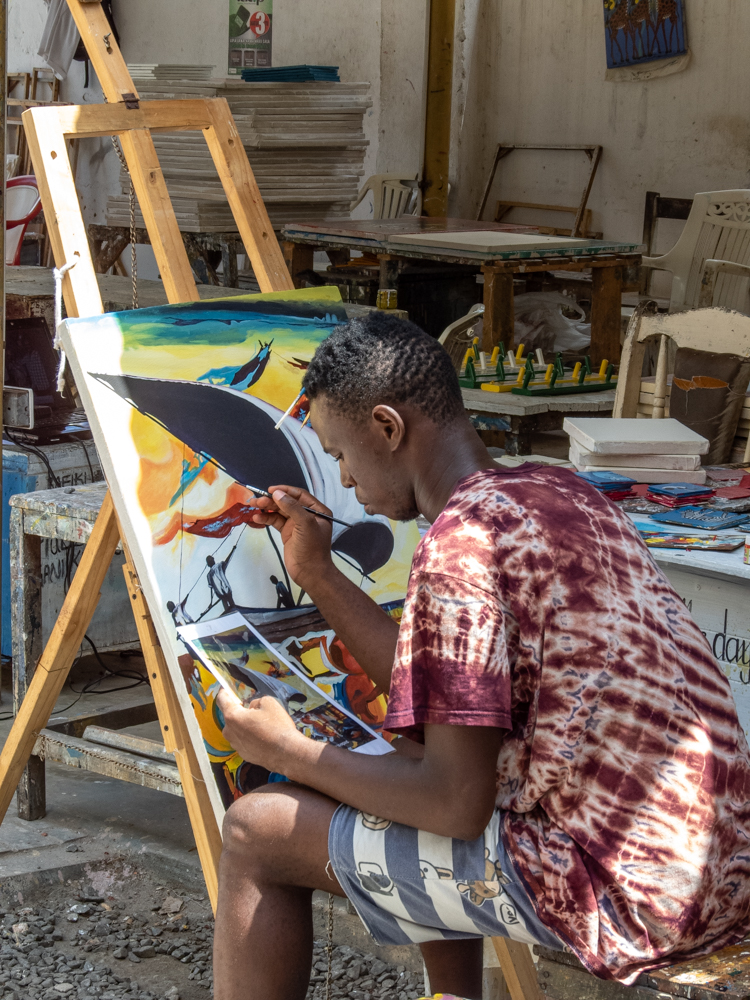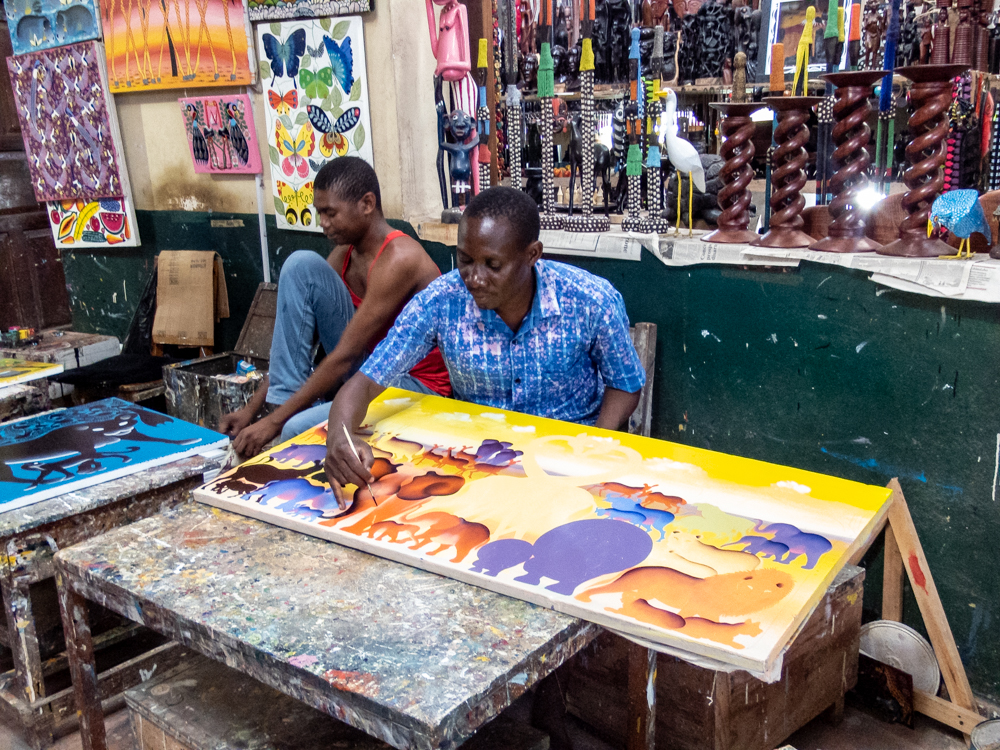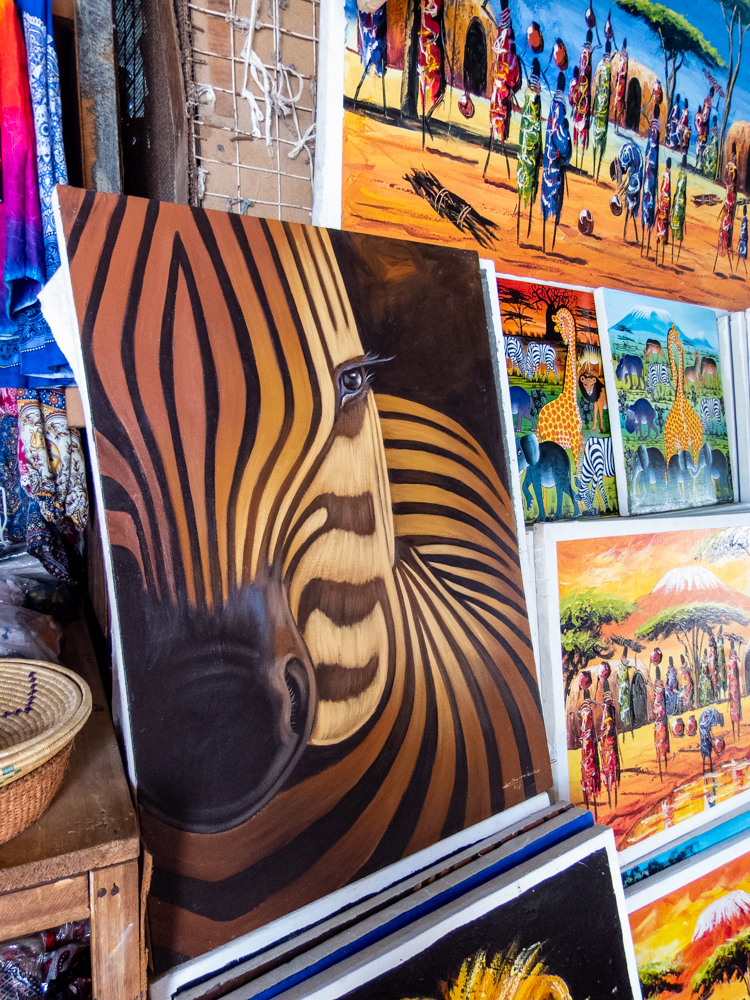One of the more popular souvenirs of Tanzania is the school of painting known as Tingatinga after, Edward Said Tingatinga. Born in 1937 in southern Tanzania, he arrived in Dar es Salaam in 1955 looking for work. He had come across brightly colored paintings of the Congo while working as a gardener and was greatly struck by them beginning to paint in that style and using bicycle lacquer, presumably because that easier to obtain than artists’ oil paints. Cutting Masonite into squares, he painted brightly colored village scenes, stylized animals and people.
In the 1960s he received assistance from Scandinavians who organized an exhibition of his work resulting in the National Development Corporation of Tanzania offering him a contract with firm prices allowing him to paint fulltime. Over a decade, many of his family worked with him painting in the same distinctive style Tingatinga had developed and, was frankly, the most lucrative.

His studio spawned a number of famous second and third generation painters including exhibits at the National Museum. Tragically, Tingatinga was shot and killed in 1972 by police being mistaken as one of a gang of robbers. His pupils and colleagues have carried on his work. The artists of the cooperative society, working in the same studios in Msasani, today employ the same style using oil paints on cloth or hardboard. The studio and paintings are well-marketed and fetch high prices abroad.
Bright and colorful scenes are painted on license plate-sized boards by a cadre of mostly men in an open pavilion. Inside once can select from stacks of choices and have a name painted on while you browse larger canvas paintings. One gorgeous woman was making a pointillist graphic on tin trays. An older gentleman described two of his paintings to me: First was Mother Africa with a large hair bundle painted to reveal her dreams inside for safety and prosperity. Second was a depiction of a rich woman (white) being carried by a slave as she reviews chained slaves to buy from the Arab trader sitting in a plastic lawn chair.




We talked for a while with one of the artists. If you are in the school and learn enough, the instructors can recommend you be offered a membership. There’s an annual fee and 50% commission to the gallery but you create and paint your own designs at your own station. It’s better than being on your own because many tourists come to visit and know the marketing and style.
While all the art is graphic and mostly brightly colored, I most appreciated the black and white zebra abstract or the stretch-legged flamingos lined up in a tight geometric grid. I opted for the graphic line of flamingoes on a useful tray rather than another painting to stretch and find room on a wall. Others of our group also bought taking home colorful memories
You can learn more about this colorful phenomenon at www.tingatingaart.com


